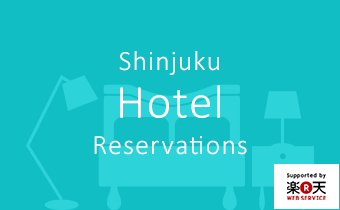We introduce attractive spot where is recommended to outing and sightseeing.
Search condition



- Learn
- Watch
Itsukushima-jinja Shrine
Itsukushima-jinja Shrine "Nukebenten" is now practically the name of the area, but it originally indicates Itsukushim-jinja Shrine, which Minamoto no Yoshiie (warrior, 1039-1106) visited for victory prayers. Former Kamakura Highway runs this neighborhood…



- Watch
- Walk
Okuma Garden
It is large lawn toikenoaru compromise between Japanese and European styles ceremony, and author is Sasaki possible village. It is thought that garden was completed in 1887 when Okuma's house was completed.



- Learn
- Watch
Taisoji Temple
Taisoji Temple Taisoji is a temple of the Jodo Sect of Buddhism and is formally called "Kakanzan Hongakuin Taisoji." Thatched hut "emperor hermitage" which Buddhist priest, emperor opened is forerunner, 1596 (1596…



- Learn
- Watch
Toyama Park
In metropolitan "Toyama park" which is full of green, the whole area around "Mount Hakone" is said to be famous spot for its cherry blossoms. "Mount Hakone" is mountain which is the highest in Shinjuku-ku, from top of Shinjuku high-rise…



- Learn
- Watch
Inarikio-jinja Shrine
Inarikio-jinja Shrine Inarikio-jinja Shrine is the only shrine in Japan dedicated to Kio Gongen, a group of three gods. kansei did fuku*ineka originally in (1653) in 1653…



- Watch
- Walk
The House of Buddhist saint with healing powers (east Hase-dera Temple: button temple)
Founded in the Kamakura period (1185-1333), this temple of the Buzan sect of Shingon Buddhism is known as a great place for beautiful botan (peonies) and is popularly referred to as Botan-dera (peony temple). We are known as famous spot of Botan, and Alias is Botan temple, button temple. We are transplanted by Nara Hase-dera Temple of the head temple of a Buddhist sect…



- Watch
- Walk
Seseragi no Sato Park
Located on the ground above Seseragi-no-sato Park sewage processing facility, it has an area of about 8,000 square meters. The park has seseragi (streams) surrounded by miscellaneous trees mainly consisting of jolcham oaks. ……



- Learn
- Watch
Shinjuku Promenade Park“Shiki-no-Michi”
Following the discontinuation of the tram system from Shinjuku in 1970, Shinjuku Promenade Park –“Shiki-no-Michi – was completed in 1974 in the area which used to accommodate the rails leading to the depot for the trams. Of "green…



- Watch
- Walk
Kansen-en Park
This park is an old park created in the Edo period (1603-1867), which used to have a large ground that included the grounds of the current Mizuinari-jinja Shrine. As for the name of sweet spring garden, there is spring in the center of garden, the spring water…



- Watch
- Walk
Shinjuku Central Park
Shinjuku Central Park is park which is full of green proud of maximum area for park where is Shinjuku Ward. i where there are many playground equipments in little child open space and, also, varies in open space of water…



- Watch
- Walk
Otomeyama Koen (Shogun's Reserve)
The "Mt. young girl" whole area is said with the put name from "hunting-prohibited mountain" of meaning of Closed to the Public in the hunting ground of family to inherit the shogunate of the Edo era. After the Meiji era, divide mountain into the north and south…



- Watch
- Walk
Omokagebashi Bridge
Bridge spanning the north side, the Kanda River of Ryocho-in is called Omokagebashi Bridge. The neighborhood whole area leaves some legends for a long time. ◎The village legend civilization year (1469-86) of Yamabuki…



- Eat
- Walk
Shinmichi-dori Street
When look at the right towards the Shinjuku area from Yotsuya Mitsuke intersection, signboard of "Shinmichi-dori Street." It is restaurant street in parallel with Shinjuku-dori St. On both sides as it is thin, popular…



- Learn
- Watch
Hanazono-jinja Shrine
As a guardian god of Naito Shinjuku, one of the shukuba (post stations) in the Edo period (1603-1867), this inari-sha shrine,which worships the Inari god of agriculture and business, was brought from Mount Yoshino in Yamato-no-kuni (current Nara Prefecture) before the Edo period. There was the cause near Shinjuku 3 chome intersection, but is gen a year (1624 through 44) Kanei…



- Learn
- Watch
Eifukuji Temple
Eifukuji Temple Eifukuji Temple belongs to the Soto Sect of Buddhism and it is said to have been founded in 1648. When enter at the gate of Eifukuji (Eifuku Temple), size of the dew seat which is rare in Shinjuku-ku…



- Watch
- Walk
Hyogo Yokocho Alley
Hyogo Yokocho is a restaurant located on stone pavement. It received the award as a place of a beautiful landscape. It is origin of name that there was arsenal (Hyogo) of Ushigome-jo Castle for the age of civil strife…



- Watch
- Walk
Shinjuku Expressway Bus Terminal
It is a transport terminal located near Shinjuku Station South gate. All the platform of highway bus and taxi around the station gathered in the terminal. You can easily transfer from Shinjuku railway station to any platform you look for. High speed, long distance…



- Watch
- Walk
"Shichifukujin Meguri"(Seven Gods of Good Fortune Tour)
As God bringing fortune "the Seven Deities of Good Luck" who have been believed in from the Muromachi era. It is event that circulation sees Buddhist temple and Shinto shrine dedicated to the Seven Deities of Good Luck as for "the Seven Deities of Good Luck circulation" and prays for good luck……



- Learn
- Watch
Suga Shrine 36 thirty-six major poets' portrait with a superimposed tanka
Before Meiji Era, there had been Gozutennou shrine and Inari shrine. Later, those two shrines were enshirined together and became "Suga Shrine". With Suka of company name, it is *…



- Learn
- Watch
7, Hozenji spotlight image of a deity
Hozenji Temple of the Nichiren Sect of Buddhism is formally called "Shunjizan Hozenji." Worship the one of the Yamanote, Shinjuku Seven Deities of Good Luck "God of Longevity", and of coloring that is good as for the state of preservation into the main hall of a Buddhist temple "seven…
